Curriculum Maps


Literacy:

This half term, the Nursery children will be encouraged to give meaning to the marks they make through different writing opportunities in the nursery environment. The children will be supported to use the correct tripod grasp during their mark making activities and when they practise their name writing. The children will be encouraged to answer simple questions and talk about key characters relating to our weekly texts.

Communication and Language:
The children are well rehearsed in initiating conversations with friends and familiar grown-ups. They will be encouraged to use their talk to organise their play, negotiate turn taking and expressing their points of view. The children will continue to use their active listening skills when other people are talking during carpet times and respond to questions with relevant responses.
Mathematics:






The children will continue to develop their knowledge of mathematical concepts (counting, ordering, subitising, measurement and comparison) within small group maths sessions and within the nursery environment. Children will learn to make comparison between objects relating to size, length, weight and capacity.
Understanding the World:
Expressive Arts & Design:

Using a range of resources, the children will be encouraged to use their imagination and creativity to design and create their own pieces of art. The children will continue to be supported to clean their brush before changing paint colour. Children will continue to sing nursery rhymes and numeracy songs. They will take part in a range of call and response songs using a range of musical instruments
Nursery Curriculum Map Spring
The children will have the opportunity to plant seeds/bulbs and care for their own growing plants. Through this experience, the children will learn to identify flowers, leaves and stems, as well as beginning to understand the life cycle of plants. The children will continue to have more experience of the outdoors through planned learning opportunities in the forest area of the school grounds. These opportunities will help the children to understand the need to respect and care for the natural environment and all living things.
Two

Physical Development:
The children will continue to develop their fundamental movement skills (crawling, walking, and jumping) in P.E sessions and when using equipment in the outdoor area (balancing, riding on scooters, trikes and bikes)
Children will continue using tweezers, scissors and threading equipment in the nursery environment to develop fine motor skills and strength.
Additional Information:
We love to see all of the lovely adventures and fun times the children experience at home. Please continue to share and document your wonderful adventures and achievements on Seesaw!
Important dates
2nd March – World Book Day
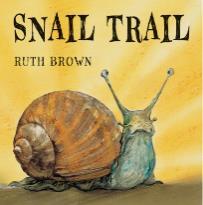

20th & 22nd March – Virtual Parents Evenings
Personal, Social and Emotional Development:
The children will be supported to recognise and understand their own emotions and the emotions of others.
The children will learn how to view themselves as responsible members of the class and take on roles as helpers during tidy up time, snack time and home time. Children will continue to access the environment confidently and independently, alongside their friends.
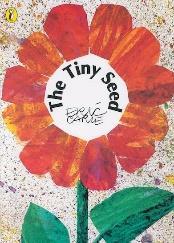
Mathematics:









During this half term, the Reception children will be introduced to numbers 6-10, using and applying the counting principles they have already learned. Children will be able to subitise smaller numbers and use this knowledge to recognise patterns in related number bonds to 5. Children shall subitise numbers over 5 when using tenframes. Children will use objects and fingers to explore number bonds to 10. We will begin to recite some by memory.
We will introduce children to 3D shapes and encourage them to notice differences between 3D and 2D shapes
Expressive Arts & Design:


With increasing independence, children can create with a purpose in mind. Children will be encouraged to create props that they can use within their role-play and within the provision.
Children will be able to move in time with music and respond to instructions, such as ‘clap along’ or ‘stamp your feet’. They will also replicate some choreographed dances.
Children will be encouraged to talk about how a picture, song or dance makes them feel.
Communication and Language:
Reception continues to be a language-rich environment, where children are exposed to new vocabulary that links to different areas of the curriculum. Children will understand a question or instruction that has two parts. They will then be able to ask questions to clarify meaning in regards to the instruction.
The children will listen to and respond to what they hear with relevant comments and questions.
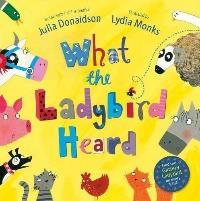
Physical Development:
This half term, children will work on skills to negotiate space and obstacles. They will also practise changing direction when walking and at an increased speed. Within their PE lessons, children will develop and their throwing and catching skills. They will also learn to control the direction of the object they are throwing, to make sure it can be received by another person Reception shall continue to work on their fine motor skills to correctly form graphemes. This includes using clear ascenders and descenders.
Understanding the World:
As part of their exploration about the world around them, the children will be encouraged to think about animals and their young. They will consolidate the names of animals and learn the names of their offspring. As part of this, they will also learn about how they have grown and changed from babies to children. To link with this learning, they will be taking care of their very own living caterpillars! They will see them grow into beautiful butterflies.
On 27th February, Reception celebrated Tooth Fairy Day! As part of this exciting day, they found out all about oral hygiene and how to take care of their teeth.
Reception Curriculum Map Spring 2

Personal, Social and Emotional Development:
Reception will continue to work on the daily routines in school which allow them to become regulated and settled; ready to learn. Children will be encouraged to share resources and take turns within activities. They will continue to use the ‘Zones of Regulation’ to allow them to independently manage feelings and emotions.
Children will be encouraged to engage in independent activities and show increased perseverance when they face a challenge. They will become more independent at finding resources and being self-sufficient learners.
Literacy:
Children will continue to take part in daily phonics sessions to support their reading development. During these sessions, children will continue to develop their segmenting and blending skills, allowing them to read words and sentences.
Children will be given lots of opportunities to develop their writing skills. We will be focussing on the children using their phonic knowledge to write words and captions/sentences.
In order to support your child’s development, we ask that you read as often as possible at home and leave a comment in your child’s yellow reading record. It really does make such a difference!
Additional Information:
Reading continues to be a huge focus in Reception, please ensure you are practising at home and leaving a comment in your child’s reading record. Share a story book exchange will return to a Monday. Please make sure your child returns the book so they can take a new one home.

PE days will be flexible during this half term so please ensure your child has their full kit in school at all times (including black plimsolls).

Year 1 Curriculum Map
Mathematics: In Mathematics, we will continue to explore additive structures where we will: combine two or more parts to make a whole, explain that addends can be represented in any order, explain that the = sign can be used to show that the whole and the sum of the parts are equal. We will then move on to look at addition and subtraction up to 10.
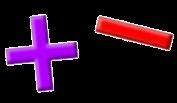
Spring 2
Science – Animals including humans:


The children will identify common vertebrates; carnivores, herbivores and omnivores the structure of animals and link human body parts to the senses.
Builds on names of common animals; life cycle of a butterfly (EYFS)
English:
The children will continue to explore poetry and will create their own calligram poem about spring to recite to an audience.

The children will meet an alien and a young girl who find themselves in trouble in ‘The Way Back Home’. They will write a continuation of the plot:
Geography – Our wonderful world
The children will learn: the names and locations of the seven continents and five oceans, recognise landmarks, understand geographical similarities and differences through studying human and physical geography of a small area of the UK and non-European country. Builds on understanding of landmarks in the local area learned in the early years.

Art
In Art, we will explore mark making with paint using primary colours. We will use the work of Mondrian as a focus.
* Link to history – Explorers
The children will discover bold women in Black History by researching Mae Jemison to write their own biography.
* Link to history – Explorers
This builds on the children being able to hold drawing tools correctly which they learned in the early years.
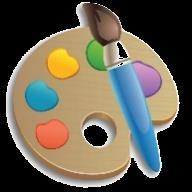
DT – How does food affect your senses?
History - How have explorers changed our lives?
In history we will be studying the lives of astronauts Neil Armstrong Mae Jemison. Looking at their significant achievements and the impact they have had on our lives today.

The children will Peel, chop and grate a selection of vegetables and modify food to suit food senses.
* Link to science and PSHE











Phonics - Children will have a daily phonics lessons and will continue to be taught to read using the Read Write Inc phonics scheme. They will learn 3 new sounds each week and will practise reading words containing new and previously taught phonics through decodable books matched to their ability.


ICT/Computing: Programming





The children will build on their learning from autumn term relating to copyright and ownership. They will learn to use an iPad and tripod to take photos, creating one image on a green screen background..
Text and Images
Music: Pulse, rhythm, performing and listening and appraising


RE – What is Easter?
The focus of this unit is the theme of religious celebration through exploration and experience of the major Christian festival of Easter. The unit begins with the first Easter day stories and explores the Christian belief that Jesus brings new life and is God’s Gift to the world.




PE – Attack, defend, shoot
In PE, the children will develop skills of throwing and catching through fun games and team activities.
Builds on fundamental skills (EYFS)
PSHE: relationships
Builds on understanding of Easter covered in EYFS. Builds on understanding of Easter covered in EYFS.
The children will play games, perform notation as body percussion, identify a variety of instruments by their sound and use them to play simple notations, listen to orchestral/folk/modern music, identify and compare the moods, emotions and genres of two songs. Our learning will culminate in a performance of a folk song.
We will be exploring the theme of relationship looking at: families and people who care for me, caring friendships, respectful, online relationships and staying safe. Builds on previous learning in year 1 and EYFS.
Reading and Spellings at home:

Builds on EYFS fundamental skills.
To reach their full potential, children must be reading aloud with an adult at home every night. Reading develops skills which are invaluable across the whole curriculum and this extra practise can have a significant impact on the amount of progress made, and the speed in which it is made. When you are reading or practising sounds with your child, please remember to sign in their reading record.


Maths Basic Skills:
Every Friday, we will be having a maths basic skills quiz. This will help the children to improve their fluency of our addition and subtraction skills and help them really embed their number bonds.
Knowledge organisers which outline the key content covered in History, Geography, Science and R.E. will be uploaded onto Seesaw.

Please take a look and quiz your child on their newly acquired knowledge!

Homework: In this half term, children will continue to receive one piece of homework each week. The focus will alternate between phonics and maths on a fortnightly basis. Homework will be sent out on Friday afternoons and will be required back in school by the following Friday. Please encourage and support your child with their homework by making sure it is completed.
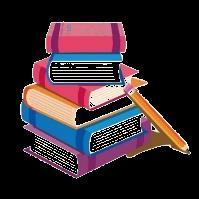
Year 2 Curriculum Map
English:
For our writing focus this half term, we will be exploring a variety non-fiction texts and writing our own non-chronological report about brown bears. We will use our reports to film our own documentaries in true Attenborough style!
*Link to Science, Computing and history

Geography
If you go down to the woods today, what will you discover?
This half term, children will deepen their understanding of climate, continents and oceans from Year 1, when considering why forests differ in different locations. Children will have further experiences of fieldwork through the exploration of maps and investigating our school grounds.
*Link to Science (plants- evergreen and deciduous trees)
Spring 2
Mathematics:
We will start off the half term by identifying 2D and 3D shapes and describing their properties. We will then move onto adding and subtracting two-digit numbers. Building on our place value knowledge of tens and ones, we will be using the column method to add and subtract accurately.

As always, we will continue to build our knowledge, pace and fluency with the 2, 5 and 10 times tables.

Science–Animals including humans:
This half term, we will be building on our learning from spring 1 and will develop our understanding of living things and their life cycles.


We will begin to use our knowledge and understanding to identify the stages of human development.
We will describe the importance of humans exercising, eating the right amounts of different types of food, and hygiene.
History
Why will we remember David Attenborough?

We will be looking closely at Attenborough’s achievements throughout his time as an English broadcaster, biologist, natural historian and author. We will examine some of his famous documentaries and discuss how they help us to learn about fascinating animals. We will look at how he has influenced others through his work to become more environmentally aware.
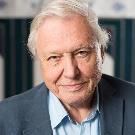
Links to science and English

*Link to science and English
Design Technology





Food and Nutrition

How healthy is your food?
This half term, we will shape and form ingredients to make delicious, healthy food using a range of culinary techniques.
* Link to Science – Animals including humans (Nutrition) PSHE – Physical health and mental wellbeing (Health)


ICT/Computing – Media: Media
This half term, we will be using different media devices to enhance our computing skills, including iPads, walkie-talkies, microphones and recordable binoculars.

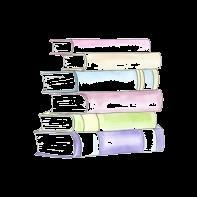
PSHE: Being safe: This half term we will explore how to keep ourselves, and others, safe when navigating the virtual and wider world.
* Link to Computing Art






Textiles and collage
We will be reconstructing painting using images and materials that were originally part of something else such as magazines or clothes.
Phonics and Spelling:

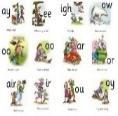
We will continue to embed our Set 2 and Set 3 sounds, whilst being introduced to Year 2 spelling patterns to become fluent with our spelling.
PE – Dance:

This half term, Year 2 will be applying agility, balance and co-Ordination skills to dance routines. We will perform basic actions with control and consistency at different speeds and on different levels. We will challenge ourselves to move imaginatively responding to music.
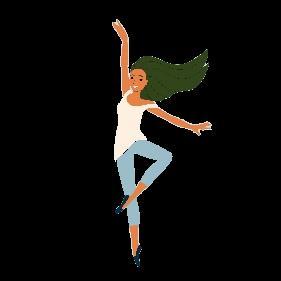
Times table Tests: Every Friday morning, we will have a times table test. When your child gets full marks for 3 consecutive weeks, they will move on to the next times tables and will receive a label in their reading record book.


Music - Inventing a musical story: We will extend our understanding of listening/appraising, singing and improvisation/composition through our performances.
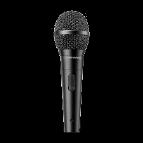


RE: How do the events of Easter make me feel?
We will develop an understanding of why Christians take part in Lent and make connections between the stories of Jesus and Christian attitudes to gifts, giving and forgiveness.
Knowledge organisers which outline the key content covered in History, Science and R.E. will be uploaded onto Seesaw
Homework:
Reading and Spellings at home:
To reach their full potential, children must be reading aloud with an adult at home every night. Reading develops skills which are invaluable across the whole curriculum and this extra practise can have a significant impact on the amount of progress made, and the speed in which it is made. When you are reading or practising spellings with your child, please remember to sign in their reading record for a chance to win fantastic prizes, including Star Reader.
Reminder: Homework will continue to be sent through Seesaw every Friday which will consolidate learning from the week. Due back: Friday!
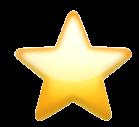

Please continue to encourage and support your child with their homework by making sure it is completed as if any homework is missed, it will need to be completed during break times or lunch times in school.

English: Children will write a short narrative describing the life and surroundings of a refugee child from their point of view, inspired by the story ‘Wisp’ by Zana Fraillon. *Link to PSHE Children will also use their knowledge from their history lessons to write a biography about the life and history of Tutankhamun. *Link to History
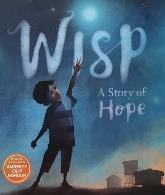
During whole class reading sessions, children will continue to delve into the story ‘Charlotte’s Web’ by E.B. White. Applying the VIPERS reading disciplines, children will broaden and deepen their understanding of vocabulary, inference, predictions, explanations, retrieval and summaries. Through ‘Book Talk’ lessons, children will develop a love for reading as they get the opportunity to discuss, role-play and evaluate books.

Year 3 Curriculum Map Spring 2
Science – Forces and Magnets:

Year 3 will conclude their study of magnets by understanding the importance of magnetic poles, analysing patterns they discover in the behaviour of like and opposite poles. They will then embark on a study of the human muscular and skeletal system, investigating the way that muscles operate in pairs and studying the three types of bone joint. The children will expand upon their knowledge of nutrition gained in Year 2, moving from an understanding of major food groups to the function of the seven nutrient types in humans.
RE – What is the significance of the events of Palm Sunday and Holy Week? Children will build on their prior knowledge of Easter from KS1 as they explore significance of the events from Palm Sunday, through Holy Week to Easter Sunday.
History - Should we celebrate the Ancient Egyptians?
Mathematics: Children will build on their knowledge of the 2 times tables to represent their 4s and 8s. Towards the end of the unit, children will work with division facts and scale by 10. Children will also explain the column subtraction algorithm and exchange 2 and 3 digit numbers from Ts to Os and Ts to Hs.


Geography –

What is beneath our feet? This unit builds on children’s ability to locate the world’s countries and they will start to identify a much wider range of countries. Children will use fieldwork to observe, measure, record and present the human and physical features in the local area. Using maps, children will look at countries, cities and geographical areas, comparing changes to their structure over time. Children will explore climate zones, biomes and vegetation belts, rivers, mountains, volcanoes and earthquakes, and the water cycle.
Children will build on their understanding of innovation and civilisation to explore the lives of the Ancient Egyptians. Investigating who they were, how they lived and in what they believed, children will use primary and secondary sources. Linked to their learning in English, children will construct a biography of King Tutankhamun.
Design and Technology – Systems:












In this half term, pupils will look at different types of energy and the ways these can be used to power different devices. They will further consider how design choices are influenced by energy sources.

Computing: This half term, children will build on their use of multimedia apps from KS1. Children will build on their iPad skills by using different camera and selecting multiple photos to send via Airdrop (Bluetooth). They will build on their Green Screen skills and explore iMovie for the first time by importing, rearranging and cropping photos and videos.


PE – Net/Wall Games (Tennis and Badminton): Children will develop their game skills through footwork, aiming and use of apparatus such as racquets. Children have been developing a sense of teamwork over the year and will continue to do so playing in doubles for some games.

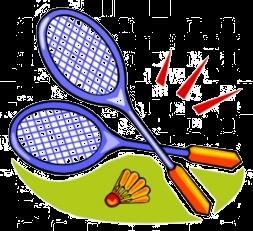



PSHE - Relationships




Children will continue to explore the relationships that they have with their family and friends. They will discuss what respect looks like both in person and online. * Link to Computing
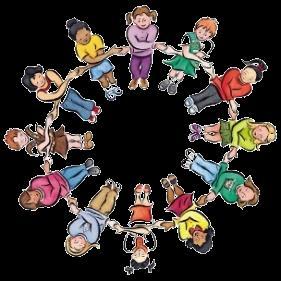
Times Tables:

Children should all be able to quickly recall the 2, 5 and 10 times tables. This year we will be introducing children to the 4 and 8 times tables. It is essential for children to be accurate and quick with tables so that they can confidently access the full maths curriculum. Keep practising!
French: This half term, the children will revisit their knowledge of Parisian landmarks and British cities, and recognise six new Paris landmarks. They will continue to use fronted adverbials and invariable verbs, as well as developing their counting up to 12.

Reading and Spellings at home:




To reach their full potential, children must be reading aloud with an adult at home every night. Reading develops skills that are invaluable across the whole curriculum and this extra practice can have a significant impact on the amount of progress made, and the speed at which it is made. When you are reading or practising spellings with your child, please remember to sign in their reading record for a chance to win fantastic prizes.

Knowledge organisers, which outline the key content covered in Geography, History, Science and R.E. will be uploaded onto Seesaw. Please take a look and quiz your child on their newly acquired knowledge!
Homework: In Year 3, children will receive two pieces of homework each week. They will have one piece of English or maths homework and one piece focussed on times tables practice. Homework will be sent out on Friday afternoons and will be required back in school by the following Friday morning! Please encourage and support your child with their homework by making sure it is completed on time; this will consolidate your child’s learning as well as earning them achievement stars.

English:
In Spring 2, children will be reading ‘Stuart Little’ by E.B. White. They will use their knowledge of the characters and setting to step into the protagonist’s shoes and write a formal letter from Stuart Little, based on his experiences throughout the text. Year 4 will also be reading a selection of funny poetry from ‘Revolting Rhymes’ by Roald Dahl. They will then create their very own nonsense poems using the structure of the poems they enjoy best!
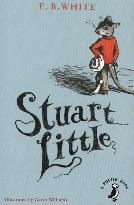
Watch out, authors about!
Year 4 Curriculum Map
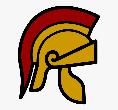

Spring 2
Mathematics:
Children will work on coordinates and build their understanding of how to plot points on a grid, using the x and y axis correctly. Later in the half term, pupils will then begin to look at the 8 times tables for the first time before they delve into understanding and manipulating multiplicative relationships. All of this work in maths lessons will help Year 4 with their weekly times tables test and fluent recall of times tables up to 12 x 12.

Science (Chemistry): States of matter








In science, Year 4 will continue building on their knowledge of the arrangement and behaviour of particles, including mixed state colloids. As the winter weather (hopefully!) gives way to warmer days, the children will take accurate readings of the transitional temperatures at the point of melting and evaporating, noting the atypical behaviour of iodine and testing sublimation for themselves. Ultimately, they will put this knowledge to the test, leading an investigation into the water cycle with their own classroom model!
DT: Structures
History: What can Pompeii tell us about Roman life?
In history, children will continue to use primary and secondary sources to understand where the city of Pompeii is. They will look at why the city is significant and so important to historians, as well as understanding what it would have been like to live in Pompeii as a Roman. Towards the end of the half term, children will look at how Pompeii was destroyed and the lessons learnt after the eruption of Mount Vesuvius.
Geography: Why do some natural disasters do more damage than others?

Pupils will extend their learning on how they can protect themselves from natural disasters, such as earthquakes and volcanoes.
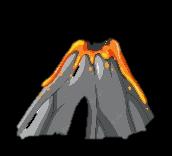
They will showcase their learning by creating their own Newsround segments warning about the dangers of natural disasters.
Pupils will continue to explore which shapes can be used to provide stability in structures. They will evaluate columns and geometric designs in buildings and collaborate on a class geodesic dome structure.
Art: Printmaking and Textiles

This half term, pupils will build on their traditional designs of Kente cloth. They will create a range of surfaces, combining colour, texture and pattern Pupils will also explore the symbolic significance of colour.

Computing:

This half term, Year 4 will create videos using a green screen. They will choose their own backgrounds and record videos of themselves talking about a school topic. Children will learn to crop images and add filters to adjust colour.


RE – How has the crucifixion affected the Christian faith?
This half term, Children will develop their understanding of the significance of Easter for Christians and their beliefs about Jesus and his relationship with God.
PSHE – Relationships
Children will continue to look at what makes a respectful and caring relationship, understanding where they can seek help if they are not experiencing healthy and safe relationships in person and online.
PE – Striking and fielding (Cricket):


Children will develop their previous skills and techniques in throwing and catching before learning to bowl accurately using an underarm throw. Pupils will also use their coordination skills to strike balls with cricket bats. Additionally, they will learn how to field effectively, learning fielding positions and how to catch balls from a height.

French:
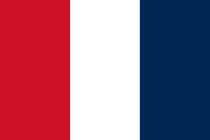
This half term, Year 4 will continue to rehearse and recite complex sentences with fronted adverbials, using the range of masculine animals they know in addition to new, feminine nouns. This will help them to build complex sentences within their writing.
Times Tables: Children should all be able to quickly recall all times tables up to 12 x 12 = 144 now. It is essential for children to be accurate and quick with tables so that they can confidently access the full maths curriculum. Keep practising!

Reading and Spellings at home:


To reach their full potential, children must reading aloud with an adult at home every night. Reading develops skills which are invaluable across the whole curriculum and this extra practice can have a significant impact on the amount of progress made, and the speed at which it is made. When you are reading or practising spellings with your child, please remember to sign in their reading record for a chance to win fantastic prizes.
Music:




Year 4 will create bass line riffs and perform a baseline based on a developed clave rhythm with an improvised melody. They will use ‘ta, ti-ti’ and ‘ta-a’ to improvise a two bar melody of up to five notes. (
Knowledge organisers which outline the key content covered in History, Science and R.E. will be uploaded onto Seesaw. Please take a look and quiz your child on their newly acquired knowledge!
Homework: In Year 4, children will receive two pieces of homework each week. They will have one piece of English or maths homework and one piece focussed on times tables/basic skills practice. Homework will be sent out on Monday and will be required back in school by the following Monday! Please encourage and support your child with their homework by making sure it is completed on time.

English: For our reading focus this half term, we will be examining non-fiction texts linked to our history and geography topics. We will discuss how the writing style can differ depending on the audience and context. We will utilise the knowledge that we gain from reading these texts to aid us in creating some outstanding non-fiction written pieces of our own. We will start with an explanation text outlining how the Maya civilisation has influenced the modern world before creating an exciting travel blog detailing what you would see if you visited Paris.
* Links to history and geography
Year 5 Curriculum Map

Spring 2
Mathematics: Building on their learning about area in Spring term 1, children will learn to calculate the volume of 3D shapes. Following this, children will be building on their understanding recall of times table facts to investigate factors, multiples and prime numbers. They will be able to identify common factors as well as prime factors and be able to use these when solving problems. Children will also learn to utilise quick strategies to accurately and efficiently multiply 3 or more numbers together.
Science – Forces







Building on our Year 3 knowledge of forces, children will be learning all about why unsupported objects fall towards Earth. Children will identify the effects of air resistance, water resistance and friction that act between moving surfaces and recognise that some mechanisms, including levers, pulleys and gears, allow a smaller force to have a greater effect.
History – The Mayans: Building on our understanding of the concept ‘civilisation’ and ‘empire’, children will use a range of different historical skills to answer the enquiry question, “How have the Maya civilisation influenced the modern world?” They will investigate life during the Mayan times and how progressive this ancient society was for its time. Children will develop their disciplinary knowledge by analysing at a range of historical source types, such as: sketches, artefacts and independent research.

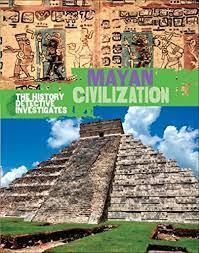
Geography – How does Paris compare to London? Building on their Year 2 learning about our capital city, children will locate both cities on a globe, developing their understanding of scale and distance. They will use six figure grid references when looking at maps to be able to describe the location of human and physical features such as: population, climate, time zone, economy, education and food and culture. They will investigate landmarks and why tourists may visit each destination before planning a tour Around Paris. *Links to French
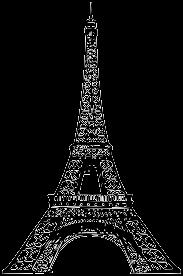
DT - Mechanisms: Using gears and pulleys, children will investigate how to lift a car onto a roof, before making their own prototype pulley system.

Art – Printmaking:

Children will use the reduction method to create a piece of printed artwork. They will explore the work of John Brusdon and make links between his work and Andy Warhol’s.
 * Links to Design Technology
* Links to Design Technology
PSHE: Relationships
Children will continue to explore family relationships as well as respectful and caring relationships with their peers. They will consider actions online and discuss online relationships and the importance of applying the same principles of a face-to face relationship when communicating with our friends online.
* Link to Computing






ICT/Computing:


Children will continue to develop their coding knowledge whilst programming microcomputers with ‘if…’ and ‘then’ statements to make selections and carry out different tasks. They will debug their algorithms to identify and rectify any errors.
PE – Striking and fielding:
In PE this term, children will continue build their understanding of tactics for games and recognise when they should play more attacking shots looking for gaps in the field and when to play more defensively. They will increase their accuracy when throwing over shorter distances and learn to track the flight of the ball to improve their catching success.
RE –What does the Qur’an teach about God?
Children will explore this sacred text and how it influences Muslim lifestyle, how it is taught and why it is significant today.
Reading and Spellings at home:


French:

This half term, Year 5 will continue to invent a range of complex sentences using subordinate clauses, using their knowledge of time in French. They will recite and rehearse complex sentences with fronted adverbials, adjectives before and after the noun, and a variety of co-ordinating conjunctions to describe civic amenities in the town where they live.
Times Tables:
Children should all be able to quickly recall all times tables up to 12 x 12 = 144 now. It is essential for children to be accurate and quick with tables so that they can confidently access the full maths curriculum. We are now having weekly times tables tests to check children’s recall so keep practising regularly at home!

To reach their full potential, children must be reading aloud with an adult at home every night. Reading develops skills which are invaluable across the whole curriculum and this extra practise can have a significant impact on the amount of progress made, and the speed in which it is made. When you are reading or practising spellings with your child, please remember to sign in their reading record for a chance to win fantastic prizes!
Knowledge organisers which outline the key content covered in History, Science and R.E. will be uploaded onto Seesaw. Please take a look and quiz your child on their newly acquired knowledge!
Homework: In Year 5, children will receive one piece of homework each week relating to work we have done that week. Homework will be sent out on Friday afternoons on Seesaw and will be required back in school by the following Friday! Children can also take a paper copy if they would prefer. Please encourage and support your child with their homework by making sure it is completed as this supports their learning in school.

English:
This half term, we will continue to study Street Child by Berlie Doherty. This will complement our history unit on the Industrial Revolution as we will explore how the protagonist (Jim Jarvis) navigates through 1860’s London as he tries to desperately avoid the Victorian workhouse!
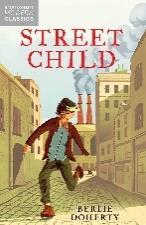
As pupils continue to develop their writing skills and style through learning and revising a range grammatical features, they will be writing a non-chronological report about the Industrial Revolution and what life would have been like back then.
Year 6 Curriculum Map
Spring 2
Mathematics:
In Mathematics, we will be continue to be working hard on our arithmetic skills to ensure quick and accurate answers. Additionally, we will be building on our knowledge of converting between units, through our study of ratio- how exciting! As well as this, we will be revisiting shape and its properties. This will provide the opportunity to use protractors to measure angles and construct shapes.
As always, times tables are at the forefront of our learning and therefore children will be using Times Table Rockstars to aid this.
Science - Electricity:






Before starting our new topic, we shall be consolidating ‘Light’ to ensure children can confidently discuss how we are able to see items and how light travels. This half term, we will be building on our knowledge of physics through our exploration of electricity. Children will learn through hands-on, practical scientific investigations using wires and batteries to create their own circuits. They will also consider which items are conductors and insulators and how these items differ. Furthermore, we will also be discussing the importance of electrical safety.
RE – How do religious people make moral and ethical choices? This half term, we will continue our understanding of Jesus and Muhammed. We will also consider what it means to be moral and ethical and how religious people use these principles in their daily lives.




Geography – Is the damage to our world irreplaceable? Linking well to our recent history unit, pupils will be exploring climate change and how this affects us. We will consider how industrial change has affected our world and discuss whether this damage is reversible or not.
History – How has the Earth’s climate changed since the 170’s? Within this unit, Year 6 will explore the Industrial Revolution by examining inventions made during this time. They will also inspect how the increase in factories influenced climate change
DT- How strong is a piece of spaghetti?
Children will test the strength of a piece of spaghetti and then use their understanding to construct a 1m tower.
Art- Painting and Collage
Pupils will develop refined skills in layering and overworking. By studying Pablo Picasso and Patrick Caufield to create a series of still life drawings combined with collaging.
ICT/Computing: This half term, children will develop their media skills. Building on their learning from Year 5, children will refine their editing and creating techniques by making their own movie using the iMovie app. The green screen will be an important tool for them in this unit and they will present their final video to their peers.
PSHE: Relationships
Children will consider actions and conduct online and discuss appropriate behaviours in online relationships. They’ll also look at respectful relationships.
* Link to Computing






Times Tables:
PE – Rounders and Cricket:
Building on their understanding from Year 3, children will be able to adhere to a set of rules when playing rounders and cricket. Children will demonstrate attacking and defending skills in the role of a batter, bowler and fielder. Children will develop their catching skills b6y tracking the ball through the air.
French:
In French, children will begin to introduce family members.
Building on the previous term, we will continue to practise greetings in French and start to ask questions about school life.


Supporting with Assessments
This is a crucial half term for children and in order to help them we have set up a Booster Club on Tuesdays after school.

Children should all be able to quickly recall all times tables up to 12 x 12 = 144 now. It is essential for children to be accurate and quick with tables so that they can confidently access the full maths curriculum. Every week, they will have a times table challenge. Keep practising!
Reading and Spellings at home:


To reach their full potential, children must be reading aloud with an adult at home every night. Reading develops skills which are invaluable across the whole curriculum and this extra practise can have a significant impact on the amount of progress made, and the speed in which it is made. When you are reading or practising spellings with your child, please remember to sign in their reading record for a chance to win fantastic prizes.
Knowledge organisers which outline the key content covered in History, Science and R.E. will be uploaded onto Seesaw. Please take a look and quiz your child on their newly acquired knowledge!
Homework: In Year 6, children will receive two pieces of homework each week. They will have one piece of English homework and one piece of maths homework. Homework will be sent out on Monday afternoons and will be required back in school by the following Monday! Please encourage and support your child with their homework by making sure it is completed as this will aid them with their transition to secondary school.

